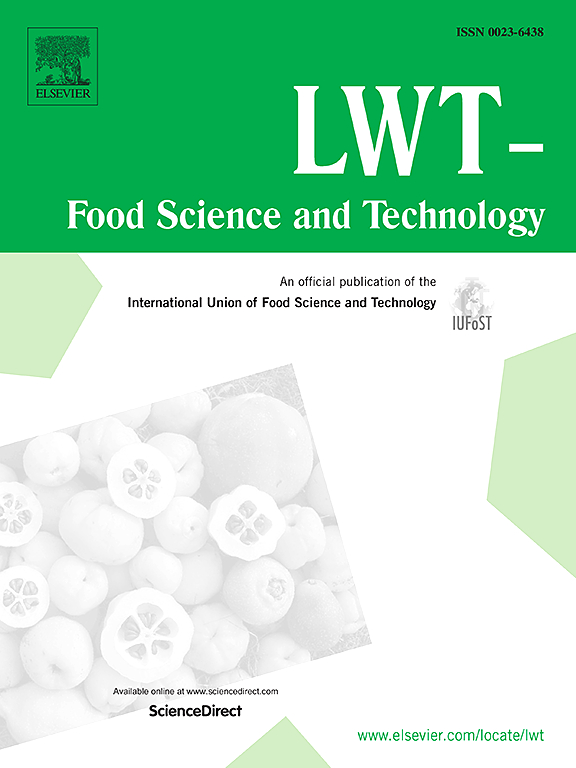Nondestructive detection of major components in fresh pork using data fusion of visible-near infrared and short-wave infrared spectra
IF 6
1区 农林科学
Q1 FOOD SCIENCE & TECHNOLOGY
引用次数: 0
Abstract
To achieve rapid non-destructive detection of the main components of pork, a partial least squares regression (PLSR) model was developed to predict the moisture, fat, and protein content in the longissimus dorsi muscle (PLM) using visible near-infrared spectroscopy (VNIR) and short-wave infrared spectroscopy (SWIR) combined with a data fusion strategy. The results showed that the low-level data fusion strategy was most effective for predicting moisture content (RP = 0.971, RMSEP = 0.192), whereas the high-level data fusion strategy demonstrated superior performance in predicting fat content (RP = 0.961, RMSEP = 0.770) and protein content (RP = 0.929, RMSEP = 0.281). Specifically, compared with the best results obtained from single spectral source models, the RPD values for moisture, fat, and protein content models established by data fusion improved by 1.206, 0.333 and 0.300, respectively. In conclusion, combining VNIR and SWIR spectral data with data fusion strategies effectively addressed the limited detection range of a single spectrum and offered a promising alternative to traditional analytical methods for efficiently quantifying the chemical composition in pork. Additionally, it also provided the core algorithm for developing handheld meat analyzers and supported the industrialization of rapid field-testing equipment.
基于可见-近红外和短波红外光谱数据融合的鲜肉主要成分无损检测
为了实现对猪肉主要成分的快速无损检测,采用可见近红外光谱(VNIR)和短波红外光谱(SWIR)结合数据融合策略,建立了偏最小二乘回归(PLSR)模型来预测背最长肌(PLM)中的水分、脂肪和蛋白质含量。结果表明,低水平数据融合策略对水分含量的预测效果最好(RP = 0.971, RMSEP = 0.192),而高水平数据融合策略对脂肪含量(RP = 0.961, RMSEP = 0.770)和蛋白质含量(RP = 0.929, RMSEP = 0.281)的预测效果最好。其中,与单光谱源模型的最佳结果相比,数据融合建立的水分、脂肪和蛋白质含量模型的RPD值分别提高了1.206、0.333和0.300。综上所述,将VNIR和SWIR光谱数据与数据融合策略相结合,有效地解决了单光谱检测范围有限的问题,为有效定量猪肉化学成分提供了一种有希望的替代传统分析方法。此外,它还为开发手持式肉类分析仪提供核心算法,并支持快速现场测试设备的产业化。
本文章由计算机程序翻译,如有差异,请以英文原文为准。
求助全文
约1分钟内获得全文
求助全文
来源期刊

LWT - Food Science and Technology
工程技术-食品科技
CiteScore
11.80
自引率
6.70%
发文量
1724
审稿时长
65 days
期刊介绍:
LWT - Food Science and Technology is an international journal that publishes innovative papers in the fields of food chemistry, biochemistry, microbiology, technology and nutrition. The work described should be innovative either in the approach or in the methods used. The significance of the results either for the science community or for the food industry must also be specified. Contributions written in English are welcomed in the form of review articles, short reviews, research papers, and research notes. Papers featuring animal trials and cell cultures are outside the scope of the journal and will not be considered for publication.
 求助内容:
求助内容: 应助结果提醒方式:
应助结果提醒方式:


